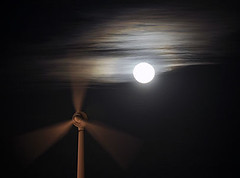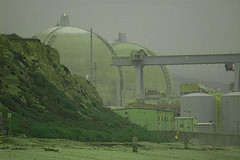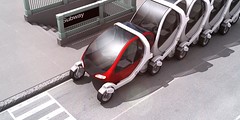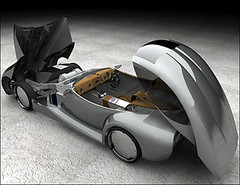
When the OPEC crisis struck in the 70's, Denmark didn't waste any time seeking out new sources of energy. They immediately embarked on a nationwide initiative to develop wind power and they now own 40 percent of the global market. The country is also a mecca for bicyclists and during a typical commute in busy Copenhagen you will encounter more bicycles than cars.
The Toronto Star reports on the Danish proclivity toward efficiency, compact living arrangements, and smart engineering. When the national leadership falters, the municipal leaders step in.
But even as climate campaigners chide their national government's recalcitrance, most offer high praise for Copenhagen's municipal leadership, which has set itself an ambitious goal for 2015 to become what it calls the world's "Eco-Metropole" – the cleanest, greenest, lowest-emitting city on the planet.
"The things we've already achieved show us that Copenhagen doesn't need national legislation to go even further. We can do most of this on our own," said Klaus Bondam, the city's mayor of technology and the environment. "Cleaning up our harbour so that you can swim and catch cod fish, enhancing our cycling network to where it is today, becoming one of the first in the world to convert the wasted heat of electrical generation into heat for our homes – Copenhagen has done all this. And now we lead Europe. By 2015, we'll lead the world."
Among the city's goals is a plan to raise to 50 per cent the number of downtown commuters arriving by bicycle. The number seems otherworldly, until you consider that bikes comprise 36 per cent of downtown traffic, compared to only 27 per cent private automobiles.
To fully comprehend how such numbers are possible, the Toronto Star sought a history lesson from Dansk Cyklist Forbund – the Federation of Danish Cyclists – an organization launched in 1905 when the pressing issue of the day was punctures resulting from horseshoe nails littered along Copenhagen's network of horse paths.
"Here in Copenhagen, riding a bike is like wearing shoes," said DCF's Allan Carstensen. "It's normal. It's easy. It's convenient. People ride in their work clothes. And even the people in cars, the chances are they have a bike at home that they use regularly to run errands in the neighbourhood."
As the article points out, the dependence on coal is a sore spot in this picture, but positive steps are underway to lessen coal usage.



